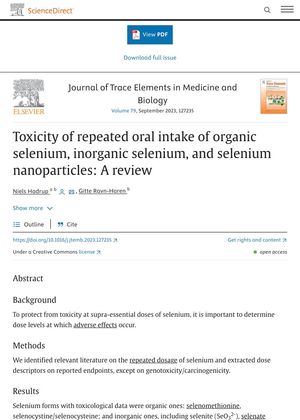TLDR Eating too much selenium can cause bad breath, hair loss, and nail changes, with harmful effects starting at low daily doses.
The review paper discusses the toxicity of repeated oral intake of different forms of selenium, including organic, inorganic, and selenium nanoparticles. Selenium toxicity in humans can lead to symptoms such as a garlicky-smelling breath, hair loss, and nail changes. A human study showed increased mortality following daily ingestion of 300 µg of selenium per day for 5 years, equal to a lowest-observed-adverse-effect level (LOAEL) of approximately 4.3 µg/kg body weight per day. The corresponding no-observed-adverse-effect level (NOAEL) was approximately 2.9 µg selenium/kg body weight per day. Some studies reported an increased risk of type 2 diabetes after approximately 2.9 µg selenium/kg body weight per day, but other studies with similar doses found no increases in mortality or incidence of type 2 diabetes. In animal studies, selenium toxicity affected body weight with NOAELs ranging from 0.24–1.2 mg selenium/kg body weight per day. Other endpoints of selenium toxicity in animals include hepatotoxicity, gastrointestinal, cardiovascular, and reproductive toxicities with varying NOAELs. The dose descriptors describing selenium toxicity were as low as 2–3 µg selenium/kg body weight per day.
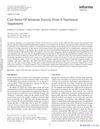 78 citations
,
December 2011 in “Clinical toxicology”
78 citations
,
December 2011 in “Clinical toxicology” Excessive selenium from a supplement caused toxicity but patients recovered with care.
27 citations
,
June 2010 in “Journal of the American Academy of Dermatology” Excessive selenium in supplements can cause hair loss and nail issues.
382 citations
,
February 2010 in “Archives of Internal Medicine” A manufacturing error in a dietary supplement caused severe selenium poisoning, affecting many people and highlighting the need for stricter quality control.
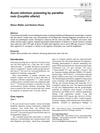 36 citations
,
January 2010 in “Human & experimental toxicology”
36 citations
,
January 2010 in “Human & experimental toxicology” Eating paradise nuts led to selenium poisoning, causing nausea, hair loss, and other symptoms in two women.
71 citations
,
June 2008 in “Annals of Internal Medicine” Excessive selenium from supplements can be harmful.
79 citations
,
April 1996 in “JAMA” Taking too many selenium supplements can cause serious health problems like hair loss and fatigue.
23 citations
,
October 1995 in “PubMed” Selenium exposure at work caused the worker's complete hair loss.
23 citations
,
August 1989 in “American Journal of Veterinary Research” High selenium diets in pigs cause health issues like weight loss, hair loss, and nerve damage.

Selenium can be toxic to animals, causing serious health issues, especially in horses.
 March 2025 in “Journal of Controlled Release”
March 2025 in “Journal of Controlled Release” The new treatment using microneedle patches shows promise for better hair growth in androgenetic alopecia.
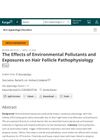 January 2024 in “Skin appendage disorders”
January 2024 in “Skin appendage disorders” Environmental pollutants can damage hair health and cause hair loss.
 5 citations
,
January 2022 in “Proceedings of the Pakistan Academy of Sciences B Life and Environmental Sciences”
5 citations
,
January 2022 in “Proceedings of the Pakistan Academy of Sciences B Life and Environmental Sciences” Nanoparticles improve cancer treatment by reducing side effects and targeting cancer cells better.
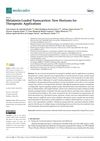 17 citations
,
June 2021 in “Molecules”
17 citations
,
June 2021 in “Molecules” Melatonin-loaded nanocarriers improve melatonin delivery and effectiveness for various medical treatments.
